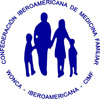Sociodemographic characteristics in benzodiazepines users at a rural village in Brazil
Resumo
Introduction: The benzodiazepines (BZD) are a kind of central nervous system depressors, used as anxiolytics, hypnotics, myorelaxants and anticonvulsants, and they shall be used only in short term therapeutics. In Brazil, it is the third most commonly prescribed class of drugs, being used by approximately 4% of the population, more often – improperly - as long term therapeutics.
Objective: The aim of this study was to evaluate the sociodemographic profile of BZD users at a rural village in Brazil.
Methodology or experience description: A cross-sectional study was carried out, assaying the sociodemographic profile of BZD users of a rural village in Brazil. The sample consisted of 234 BZD users, living in that village, regardless of age and gender. The health community agents of the village provided a list with their names, and variables such as number and name of used BZD, gender and age were taken from each patient’s medical records. Data analysis was performed and showed up as percentage frequency distribution.
Results: The village has 5,032 inhabitants, with 4.7% of BZD users. 49.2% of them were 60 years or older and 71.8% were female. It’s important to point out that only 14.3% of the village residents are elderly and 49.7% are female. This high prevalence of users among elderly and female is registered by many studies. Among the elderly, this might be caused by sleep disorders, depression and degenerative neurologic diseases; among the females due to higher frequency of anxiety and depression. Regarding the number and kind of used BZD, 98.7% of patients use one drug; 60.8% use Clonazepam, 17.7% Diazepam and 6.8% Alprazolam. The first one is more often available as a free drug by public health system.
Conclusions or Hypothesis: It was observed a high prevalence of BZD users in that village, most of them elderly, female, and using clonazepam. Therefore, it is necessary a further monitoring of these users and the offer of alternatives to medecines to control the related disorders and diseases.
Palavras-chave
Texto completo:
PDF (English)Apontamentos
- Não há apontamentos.
Este periódico é de responsabilidade das associações:
Apoio institucional:







